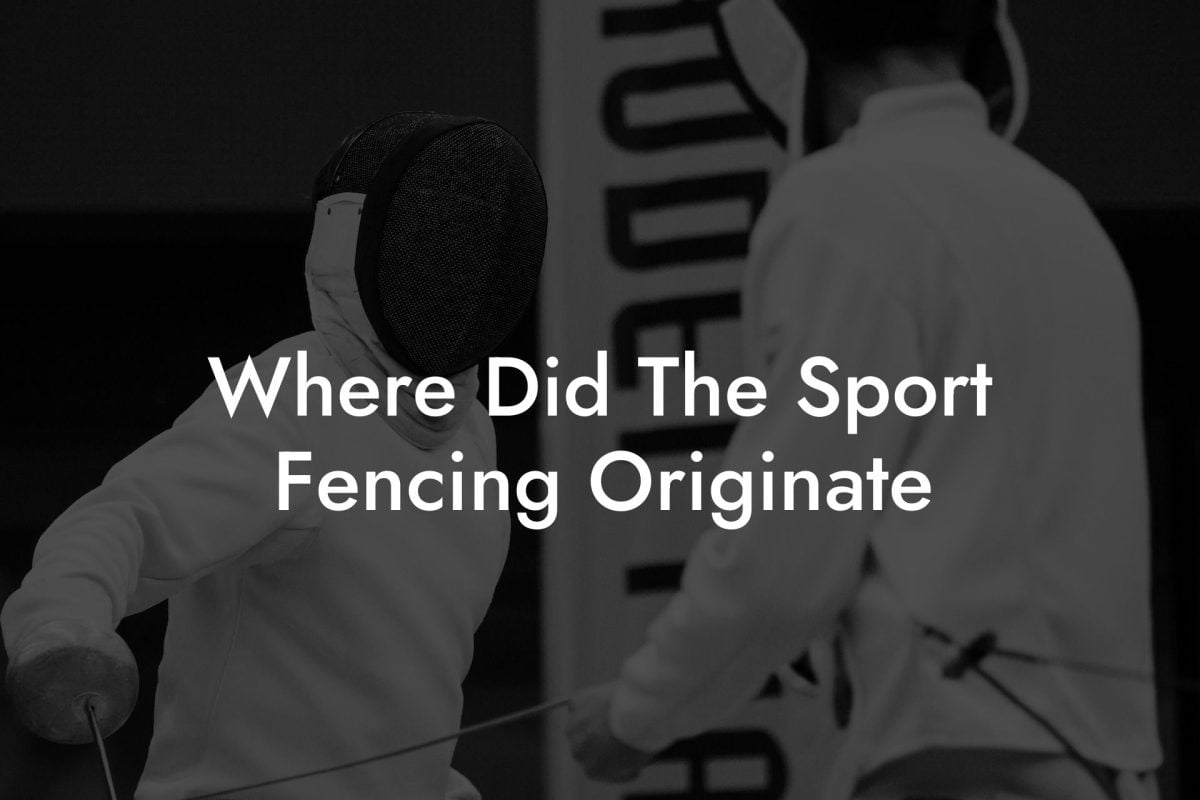The world of fencing is filled with elegance, precision, and intense competition. As thrilling as it can be, many aspiring fencers often wonder: why is fencing sport so expensive? In this article, we'll dive into the various factors that contribute to the high costs associated with this unique sport and discuss ways to manage expenses. Whether you are a beginner starting your fencing journey or a seasoned pro, understanding the underlying costs can help you better navigate and appreciate the world of fencing.
Why Is Fencing Sport So Expensive Table of Contents
The Price of Quality Equipment
One of the most significant factors in fencing's overall expense is the high-quality equipment required to participate in the sport. Your protective gear, weapon, and uniform can quickly add up. Let's break down the expected costs for essential fencing equipment:
- Mask: A fencing mask provides safety and proper visibility during bouts. Prices typically range from $70 to $250, depending on the level of protection and comfort.
- Uniform: A complete fencing uniform includes a jacket, knickers, and underarm protector. These garments provide protection against weapon touches and ensure compliance with competition rules. Uniform prices can range from $100 to $500.
- Gloves: A good fencing glove is essential for grip and protection. Basic gloves cost as little as $20, while more advanced options can go up to $100.
- Weapons: Fencing features three different weapons: foil, epee, and saber. Each weapon has its own unique design and cost, typically ranging from $50 to $300 per weapon.
- Bags and other equipment: Transporting and maintaining your fencing gear requires bags and other items such as body cords and tools. These additional items can range from $50 to $200.
In total, beginners can expect to spend anywhere from $300 to $1,000 just on equipment when starting out in fencing.
Club Fees and Coaching
Fencing expertise comes with practice and guidance from experienced coaches. Joining a good fencing club is essential for skill development and competitive opportunities, but it comes at a price. Club fees usually include access to facilities, group classes, and participation in club-hosted tournaments. These fees can range from $75 to $300 per month, depending on the quality and location of the club.
In addition to club fees, private coaching is a valuable investment for personal growth and improvement within the sport. Private lessons can cost anywhere from $40 to $100 per hour. Coaching fees may vary based on the level of expertise and the coach's reputation.
Tournament and Travel Expenses
Competing in fencing tournaments allows athletes to test their skills against opponents from different clubs, regions, and even countries. While exciting, these events can be quite costly, especially when they require significant travel. Entering a local tournament can cost between $30 and $60, while larger regional or national events can range from $100 to $300 per event.
For those pursuing the competitive side of fencing, travel expenses such as transportation, lodging, and meals can add up quickly as well. Multi-day tournaments and international events can quickly escalate an athlete's annual fencing budget.
Why Is Fencing Sport So Expensive Example:
Imagine a fencer named Jane who has been fencing for two years and is dedicated to improving her skills to compete at a higher level. Jane's annual costs might look something like this:
- Club fees: $200 x 12 months = $2,400
- Private lessons: $60 x 2 lessons per month x 12 months = $1,440
- Local tournament fees: $40 x 6 tournaments = $240
- Regional tournament fees: $150 x 3 tournaments = $450
- Travel expenses: $1,000 (flights, hotels, meals)
- Equipment replacements or upgrades: $200
Thus, Jane's estimated annual fencing budget is approximately $5,730, highlighting the financial commitment required within the sport.
The high costs of participating in fencing may feel daunting, but understanding the various expenses can help you make informed decisions and find ways to minimize costs. Investing in durable, high-quality equipment and making the most of coaching opportunities will pay off in your fencing journey. We hope this guide has provided valuable insight into the world of fencing and its associated expenses.
Keep exploring the Anchorage Fencing Club blog for more in-depth articles on fencing equipment reviews, technique guides, and other fencing-related topics. Be sure to share this article with fellow fencers to help shed light on the true costs of the sport we all love!













